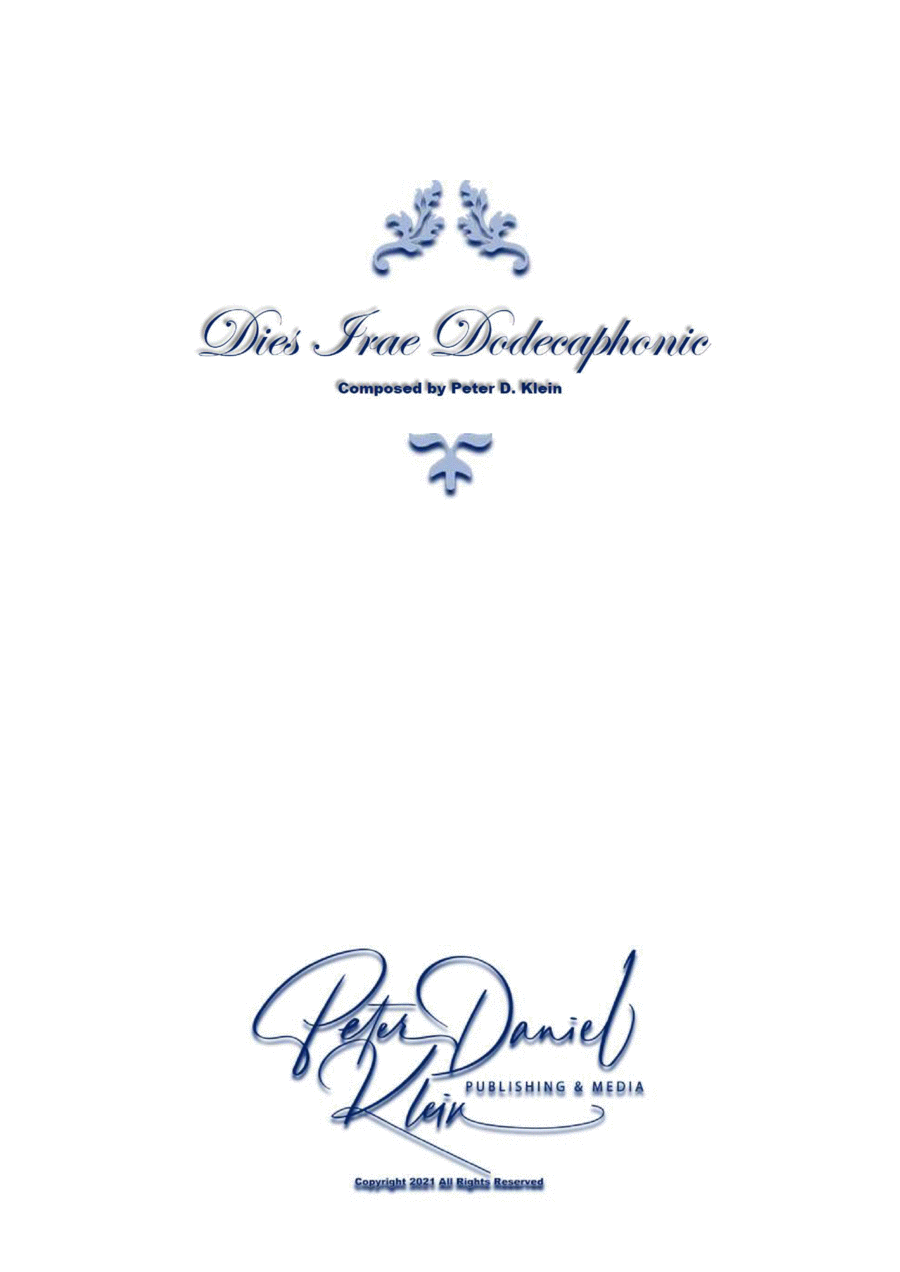Piano Solo - Level 5 - Digital Download SKU: A0.1029561 Composed by Peter Daniel Klein. 20th Century,Contemporary. Score. 13 pages. Peter Daniel Klein #6401141. Published by Peter Daniel Klein (A0.1029561). This musical piece is comprised of two twelve-tone rows, atonal music based on synthetic scales unique to each composition, which are based on medieval plainsong chants whose systemization was begun by Pope Gregory I during the sixth century AD. A simple explanation of this composition is that it is the world's oldest notated music combined with modern 20th-century music theory that eschews traditional melody and harmony for synthetic scales unique to each composition. The music is complex and dissonant, although the conversion of the two plainsong chants to twelve-tone rows retains a semblance of a tonal center at given points throughout. Still, the entire piece of music is that same melody utilized harmonically: just forward, backward, upside-down, backward and upside-down, rhythmically altered, transposed, displaced up or down, or split into smaller cells and then reprocessed in the same way mentioned above. I have also borrowed the Baroque Period techniques of the two-part invention and four-voice fugue combined with serial musical techniques that may offend the average listener's traditional musical sensibilities but make logical structural sense. I used the Dies Irae (The Day of Wrath) and Tuba Mirum (The Last Trumpet Call). The authorship of the chants has been attributed to many saints from Gregory to Thomas of Celano but probably evolved from early Jewish psalmody carried forward by the earliest Jewish converts to Christianity, which further developed into trochaic metered poetry by successive monks. It was set to memorized plainsong heralding back, in part, to Jewish worship. The text of the Dies Irae is very similar to Zephaniah 1:16​. The last trumpet call that raises the dead in Christ is comparable to the Apostle Paul's account written in his first epistle to the Corinthians Chapter 15 and first epistle to the Thessalonians Chapter 4. The two epistles may, or may not, be related to the Final of the Seven Trumpets bringing God's Judgement on the earth spoken of in Revelation 11. The relationship of the trumpet mentioned in the epistles to those written about in Revelation divides theologians, but I digress into unrelated matters. Despite the modern theory, the music is still movingly visceral because of its conceptually descriptive nature. It is full of aural symbolism following the Dies Irae and the Tuba Mirum, making it a type of program music ala Hector Berlioz of the Romantic Period. The music is, therefore, genuinely eclectic because it has blended qualities of several musical periods. The final section of the video explains the symbolism. The music difficulty is virtuosic, extremely taxing to play.
